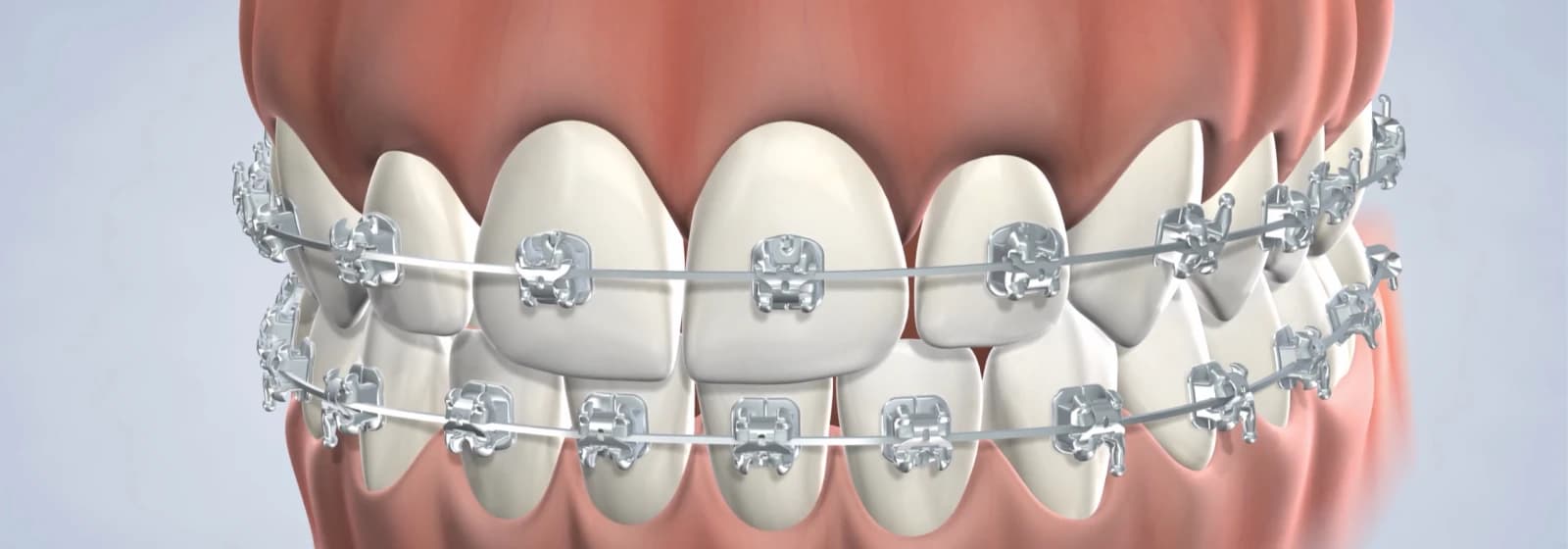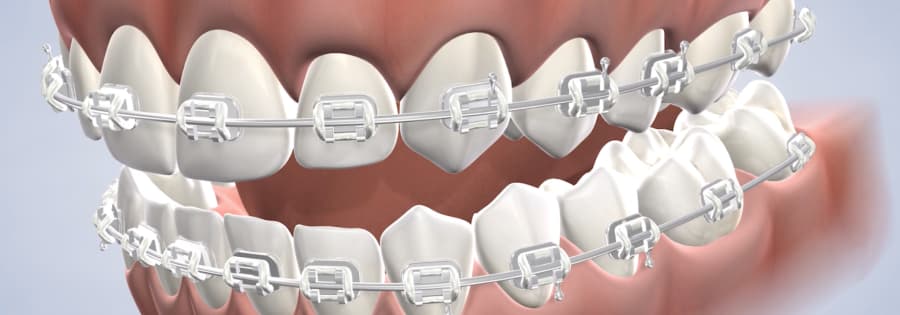November 2022
If you want straighter teeth or require treatment for a bad bite, braces can help! Braces are safe and effective orthodontic appliances that move teeth into their proper positions and help kids, teens, and adults achieve healthier smiles they can feel proud of. Dr. Andrew Horne is a board-certified orthodontist at Full Smile Orthodontics who offers braces treatment to patients of all ages in the Texas Panhandle. If you or your child need braces, contact our office in Dalhart, TX, today to schedule a consultation.
How Do Braces Work?
Dental braces are a tool used to straighten teeth. Braces move teeth by placing continuous pressure on the teeth, forcing them to move into proper alignment. Traditional braces are made of stainless steel and consist of brackets that are cemented onto teeth connected by a wire. At appointments, we will tighten this wire to continue placing pressure on the teeth until we achieve the desired results.
Braces can correct a number of issues, including:
- Overcrowding
- Misaligned jaw
- Overbite
- Underbite
- Open bite
- Crossbite
- Chewing and speaking problems
- Crooked teeth
- Gap teeth
Life With Braces
While wearing braces, you can continue to enjoy work and school activities to the fullest extent. There are some differences, however, in the recommended foods to eat with braces. We will show you how to keep your braces clean and cared for, but it is your responsibility to practice good oral hygiene and avoid eating things that could damage your oral appliances.
Foods to Avoid With Braces
- Caramel, fudge, toffee, and chewy candy
- Popcorn, nuts, and hard candy
- Chewing gum
- Pizza crust, bagels, and hard bread
- Pretzels and chips
- Reduce your intake of sweets, sodas, and sugary foods
Foods Safe for Braces
- Mashed potatoes
- Yogurt and smoothies
- Soups
- Scrambled eggs
- Oatmeal
- Seafood
- Soft fruits
- Soft cheese
- Pasta
- Cooked or soft vegetables
As you get used to wearing your braces, you can enjoy eating any foods you would like, as long as they do not pose a threat to your oral appliances. As a good rule of thumb, if you can cut it with a fork, it is probably safe to eat with braces. Take extra care to brush around your brackets to avoid decalcification, and protect against cavities and tooth decay.
Types of Braces
There are many types of braces available, and the right choice will depend on the issues you are looking to correct, how visible you want them to be, and your budget. Dr. Horne will take 3D scans of your teeth to evaluate your condition, outline all of your orthodontic treatment options, and keep you involved in the treatment planning process. In addition to your braces, other appliances such as rubber bands or springs may be required to apply additional force on the teeth.
- Traditional Metal Braces. Traditional metal braces are silver and consist of brackets attached to the front surfaces of teeth.
- Ceramic Braces. Ceramic braces are made of a tooth-colored material and are bonded to the front of teeth like traditional braces. They are less noticeable than metal brackets, but still consist of brackets and wires, and function like metal braces.
- Lingual Braces. Lingual braces are bonded to the backs of teeth, facing the inside of the mouth. They are not as noticeable, but require special care to keep them clean because they can be difficult to see.
- Clear Aligners. Clear plastic aligners like Invisalign® put pressure on teeth like braces, but do not require brackets or wires. Instead, you will wear removable custom trays that gradually move teeth over time. Clear aligners are virtually invisible and are ideal for patients who want to discreetly straighten teeth.
Should I See a Dentist or Orthodontist for Braces?
Dentists specialize in maintaining good oral health, while orthodontists specialize in the alignment of teeth and maintaining a healthy bite. After completing dental school, orthodontists must complete several additional years of training. During this time, they learn how to use a variety of oral appliances to manage malocclusion, or the misalignment of teeth and jaws. Some dentists offer basic teeth straightening services in addition to general dentistry, but an orthodontist’s sole focus is on straightening teeth. When it’s time to get braces, an orthodontist is the dental expert to visit.
Braces in Dalhart, TX
Full Smile Dental proudly offers braces to children, teens, and adults in the Texas Panhandle. We take the time to get to know our patients beyond their orthodontic needs and make appointments fun and enjoyable. If it’s time for you or your child to start wearing braces, we invite you to contact us in Dalhart, TX, to schedule a consultation with our board-certified orthodontist, Dr. Andrew Horne.
Hear From Braces Patients
These patients can tell you about their firsthand experience undergoing braces at our office.
Frequently Asked Questions
How much do braces cost?
Several factors contribute to the overall cost of braces, making the final price a little different for everyone. These factors include the duration of treatment, insurance coverage, the type of braces, and if any additional treatments are necessary. Contact Full Smile Orthodontics to find out how much your braces would cost in Dalhart, TX.
How do braces work for adults?
Braces work for adults the same way they work for kids. Adults typically have better brushing habits established compared to children, so lingual braces may be more suitable for older patients because they require extra care to keep clean. Children and adults of any age can get braces to achieve better oral health and a beautiful smile.
How many visits before you get braces?
We will meet with you one or two times before we put your braces on. During these initial visits, we examine 3D scans of your face and formulate a detailed plan for your entire orthodontic care. Once we have your treatment plan in place and you are ready, your braces journey will begin!
How quickly do braces start working?
Braces start working immediately, although you may not notice any visible changes until two or three months into your treatment.






